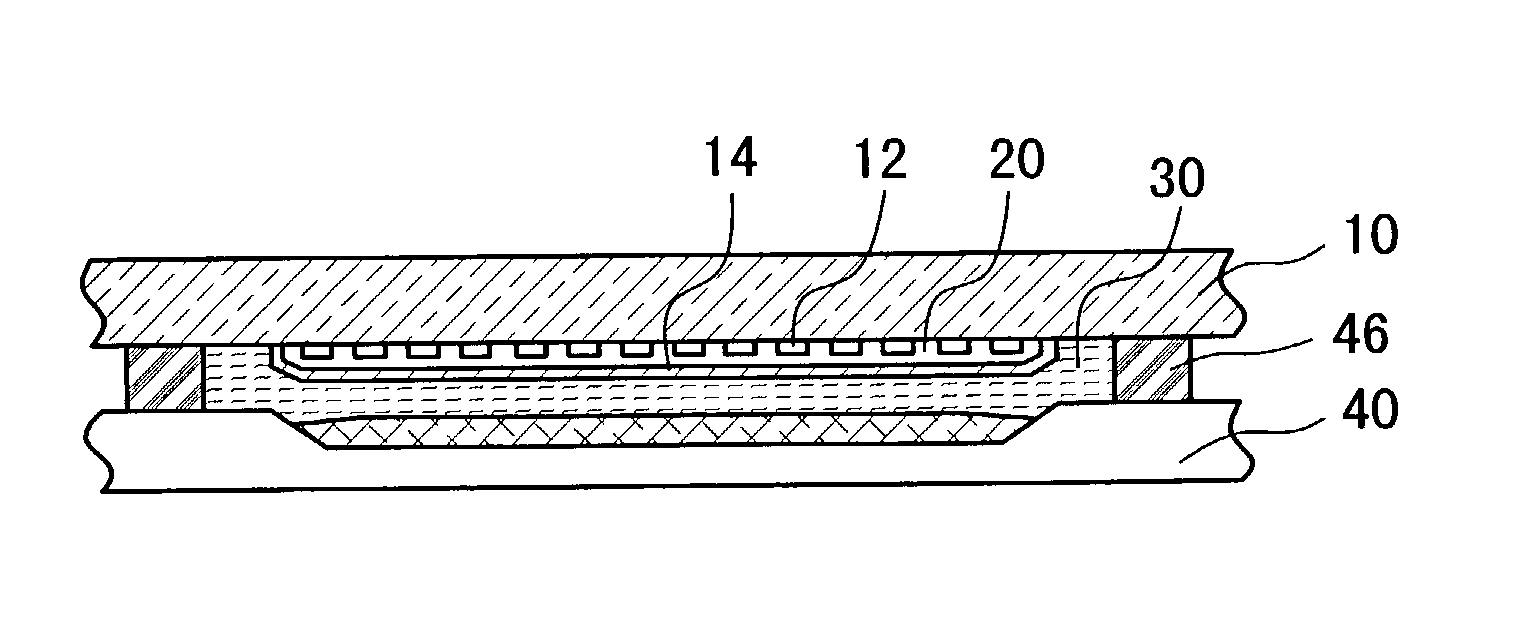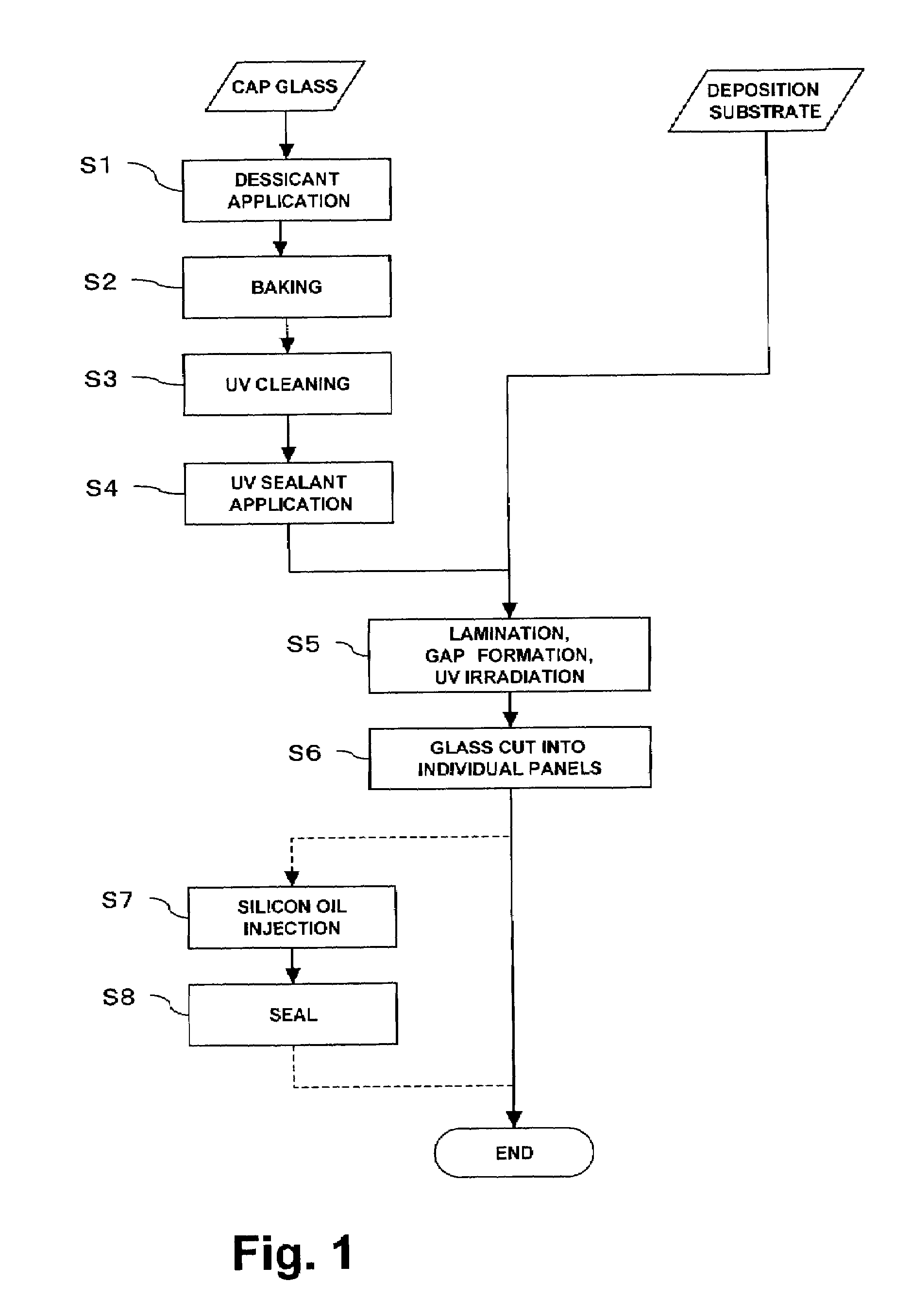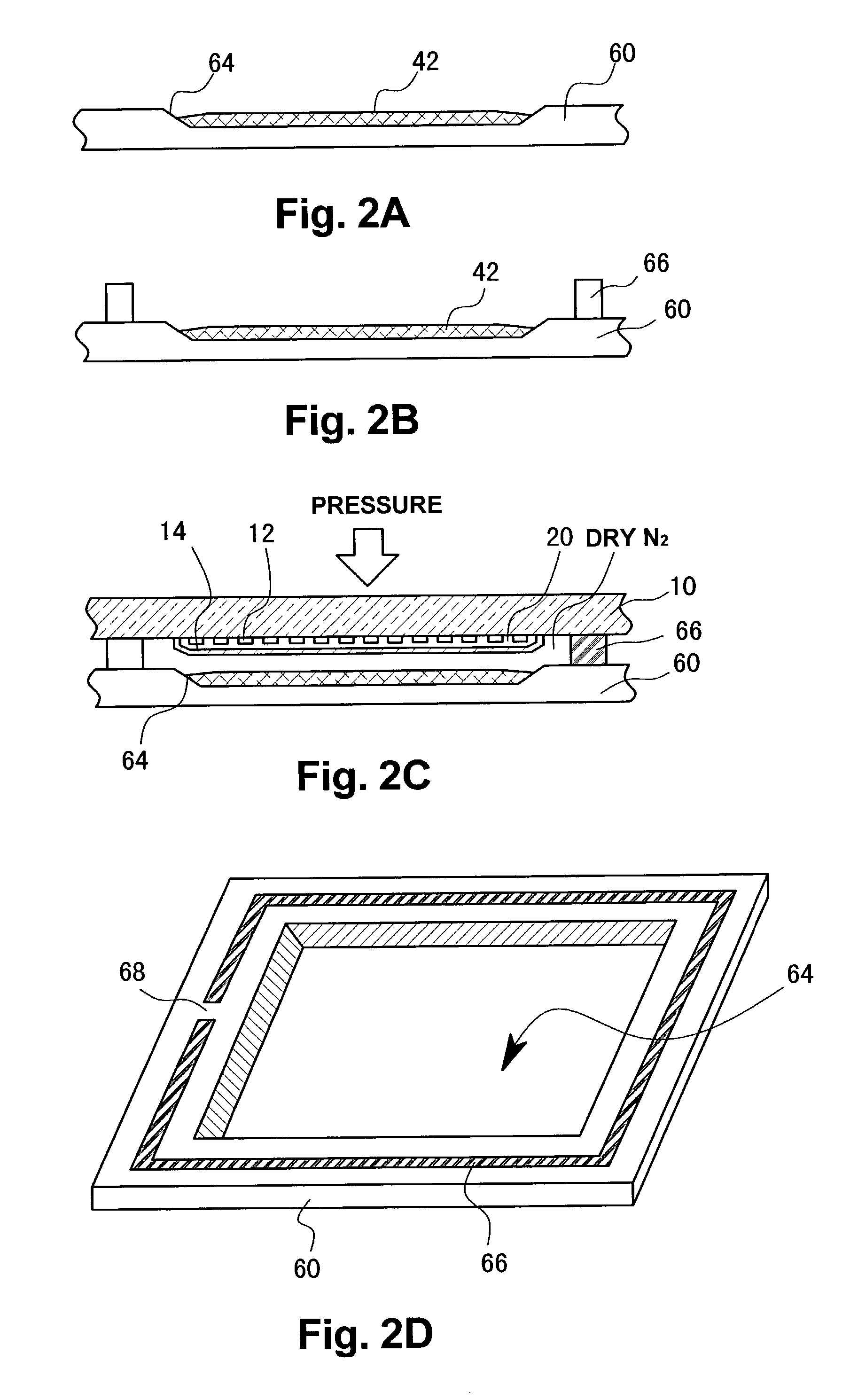Method of manufacturing electroluminescence panel
a technology of electroluminescence and manufacturing method, which is applied in the manufacture of electrode systems, cold cathode manufacturing, electric discharge tube/lamp manufacture, etc., can solve the problems of difficult to maintain a gap between substrates, come in contact with elements, and significantly deteriorate organic el elements, etc., to achieve the effect of reliably protecting organic el elements
- Summary
- Abstract
- Description
- Claims
- Application Information
AI Technical Summary
Benefits of technology
Problems solved by technology
Method used
Image
Examples
Embodiment Construction
[0029]A method of manufacturing an organic EL panel according to an embodiment of the present invention will be described with reference to FIGS. 4, 5A to 5D, 6A, 6B, and 7A to 7C. First, an opposing substrate (cap glass: sealing substrate) 40 is prepared and a paste of a desiccant 42 is applied to the substrate 40 (S11). A desiccant paste is a solvent containing a mixture of Ba oxide, Ca oxide or the like. As shown in FIG. 5A, an etching pocket 44 is formed in the panel region of the cap glass 40 by etching, and the desiccant 42 is applied to this etching pocket 43. Then, the whole product is baked at about 140° C. or more in an oven (S12). As a result, a solvent or the like evaporates from the desiccant 42 and the desiccant 42 is activated. Next, a surface of the substrate 40 is cleaned with UV irradiation having an energy of 10 mW / cm2 or greater. Thereafter, a UV sealing member 46 is applied to the substrate 40 such that it projects from a planar surface of the cap glass 40. More...
PUM
 Login to View More
Login to View More Abstract
Description
Claims
Application Information
 Login to View More
Login to View More - R&D
- Intellectual Property
- Life Sciences
- Materials
- Tech Scout
- Unparalleled Data Quality
- Higher Quality Content
- 60% Fewer Hallucinations
Browse by: Latest US Patents, China's latest patents, Technical Efficacy Thesaurus, Application Domain, Technology Topic, Popular Technical Reports.
© 2025 PatSnap. All rights reserved.Legal|Privacy policy|Modern Slavery Act Transparency Statement|Sitemap|About US| Contact US: help@patsnap.com



